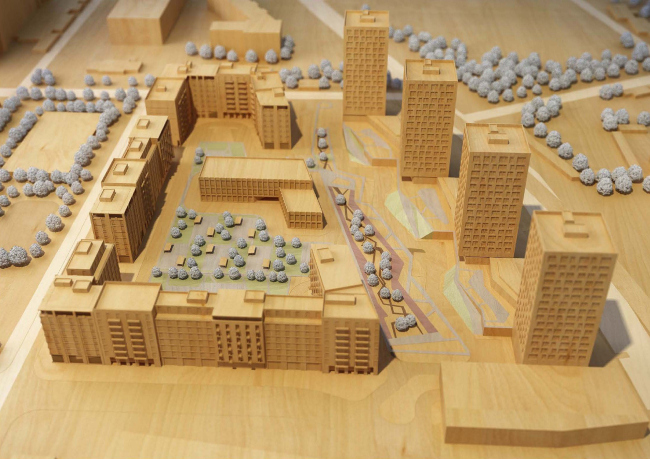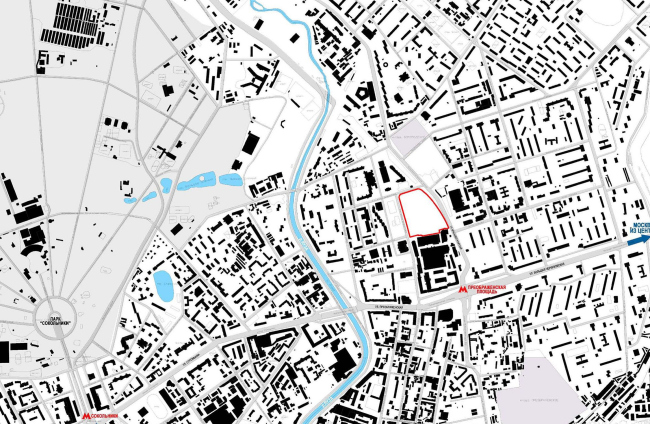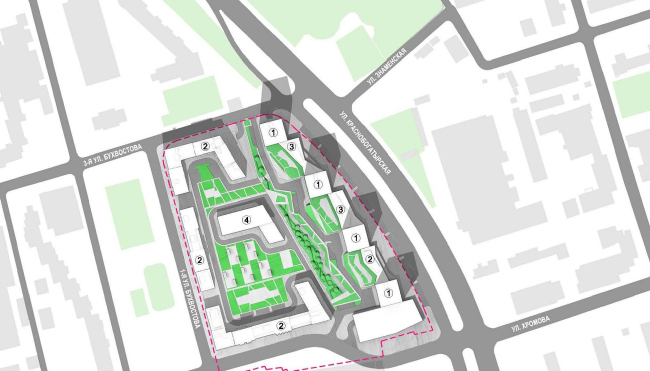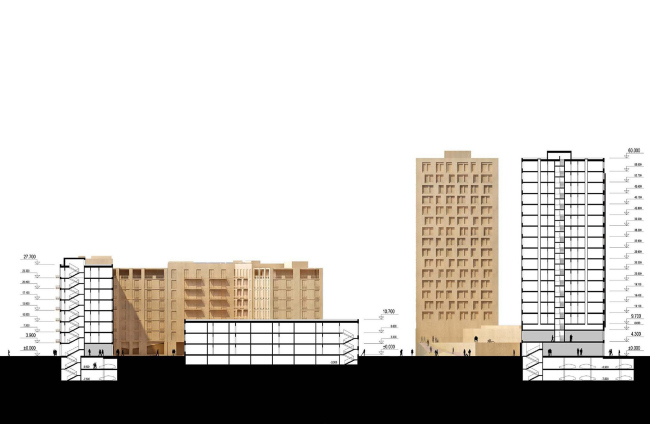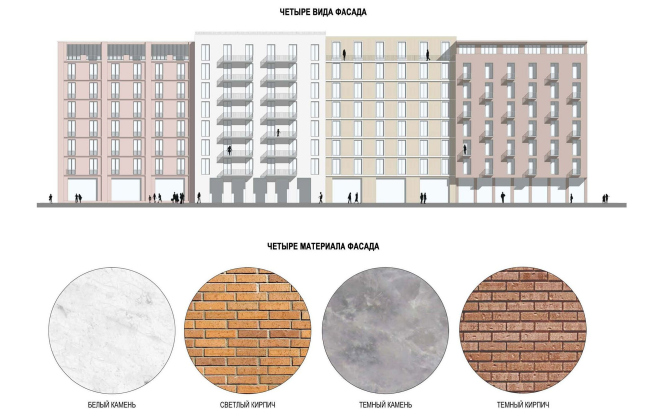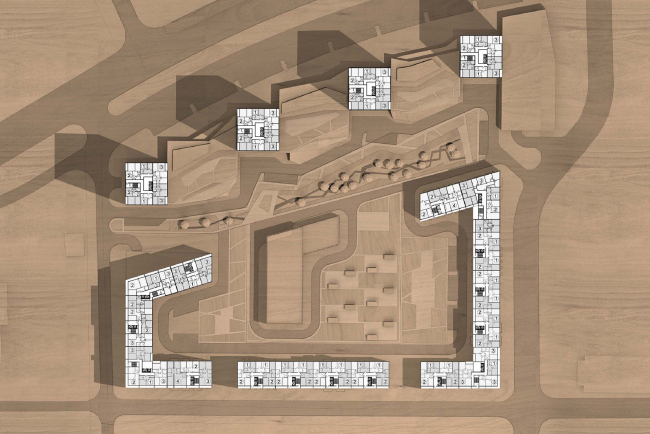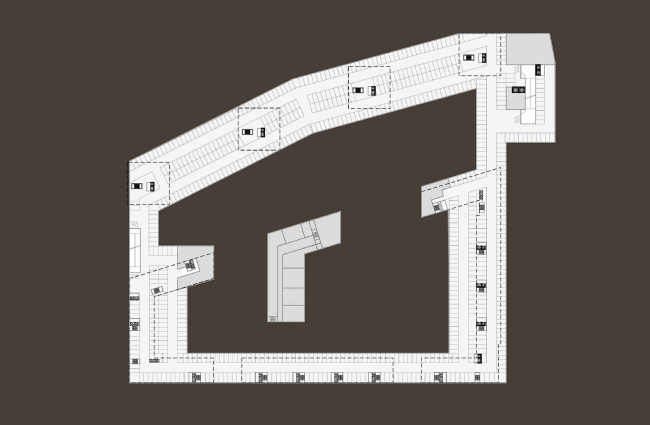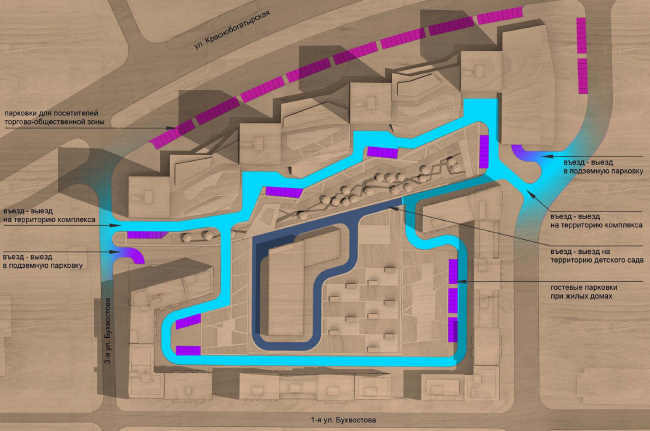|
Taking part in the contest for the project of a multifunction residential compound on 1st Bukhvostova Street in Moscow, ABD Architects came forward with a composition of four houses and three slab blocks with cozy green courtyards between them.
Because of the bend of Krasnobogatyrskaya Street,
the land site, allotted for the construction of the residential compound, has a
trapeze-shaped layout with one of its sides noticeably rounded. ABD Architects
reasoned that in order to secure the new block from the noise of the street
with its heavy traffic (besides the endless flow of cars, Krasnobogatyrskaya is
rocked and shaken by the rolling tram at regular intervals), one high-rise
volume behind a small park will not be enough. This is why the architects place
four fifteen-storey towers along its arch. Compact on the layout, they are
raised on a single two-storey stlylobate and form the outward eastern building
front. At the same time, the authors design the stlylobate as a complex polygon,
cutting inside it, both from the side of the street and from the side of the
designed block, numerous “pockets” and niches that give the elongated volume
more sophisticated and interesting plastics. From the Krasnobogatyrskaya side,
these recessions off the red line will serve as an extra invitation for the
pedestrians to come inside the shops and cafes that are going to be placed
here, while from the inner side of the yard they will enable the architects to
make small green squares open to the central promenade – the diagonal that
traces the arch of the street.
The architects deliberately designed all the four towers exactly like one
another – the narrow verticals are placed at fair intervals, so the unobtrusive
theme of different-width windows and light-shaded finish of the facades does
not look “too much” here. Quite the opposite, in fact: this stylistic unity serves
to create the effect of a “partition”, though penetrable but still capable of
protecting the new block from the outside world with its weltering traffic jams.
The slab blocks, on the other hand, are composed of fragments that are
ostentatiously different. For their finish, the architects use two materials
that they take in two colors. These are bricks and rocks – by alternating the
two, the authors achieve the tranquil but at the same time diverse palette with
a gradient from an almost white to the rich terracotta color. The visual diversification
of the volumes of the buildings is also achieved by the different height of their
sections – they have the same number of floors but the crests are made at times
higher and at times lower, thus forming an expressive “pulsing” silhouette. None
None
None
None
None
None
None
None
None
None
|
